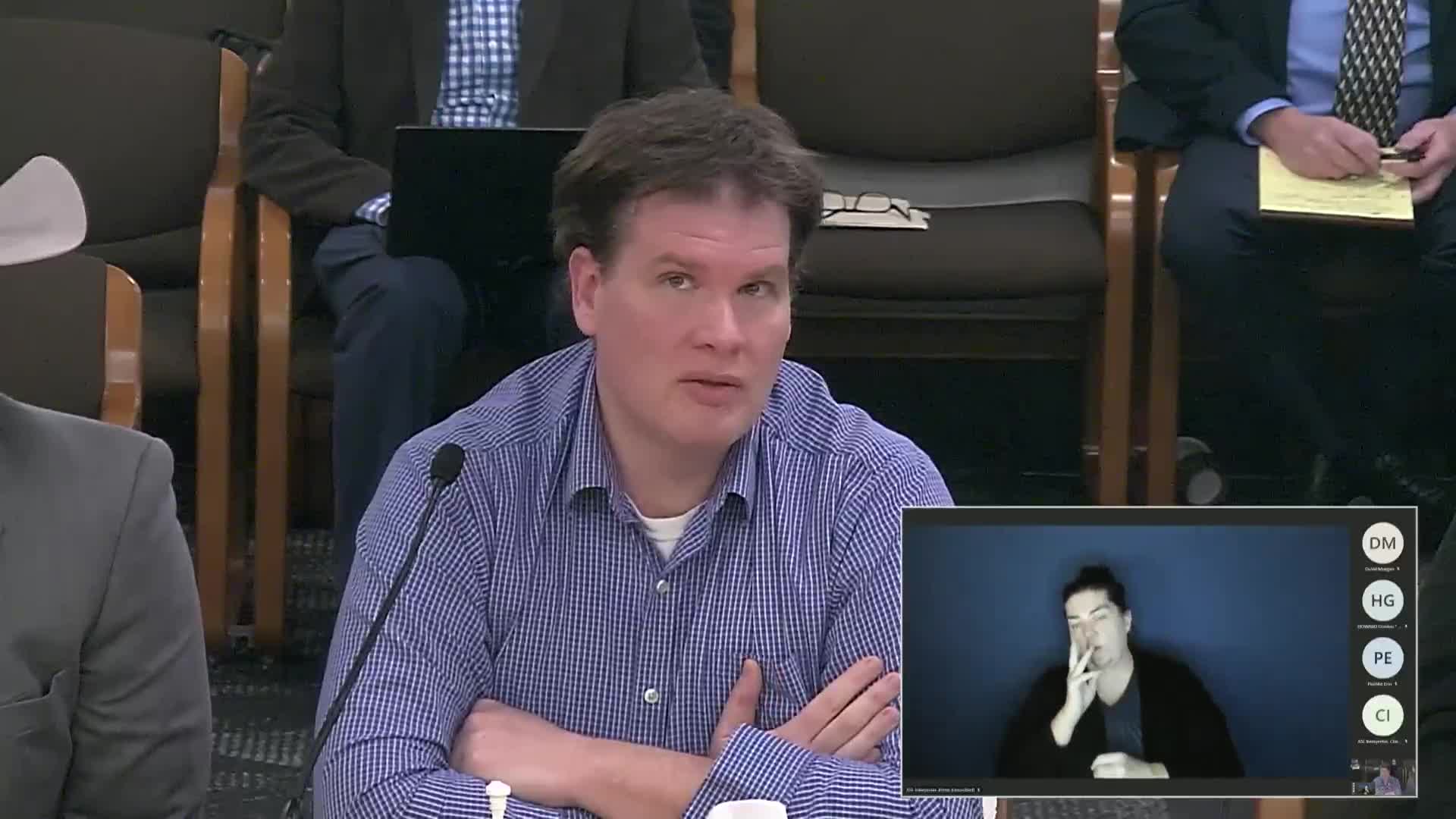Oregon Task Force explores agrivoltaics and land use regulations for farmers
March 18, 2025 | Climate, Energy, and Environment, House of Representatives, Committees, Legislative, Oregon
This article was created by AI summarizing key points discussed. AI makes mistakes, so for full details and context, please refer to the video of the full meeting. Please report any errors so we can fix them. Report an error »

In a pivotal meeting of the Oregon House Committee on Climate, Energy, and Environment, discussions centered around the innovative concept of agrivoltaics—combining agriculture with solar energy production—highlighted both opportunities and challenges for Oregon's farmers. As the sun streamed through the windows of the state capitol, committee members and experts gathered to explore how this dual-use approach could reshape the agricultural landscape while addressing energy needs.
The meeting featured testimonies from various stakeholders, including farmers and representatives from the Oregon Solar and Storage Industries Association (OSEA). They emphasized the potential benefits of agrivoltaics, particularly for farmers seeking to diversify their income streams. One farmer noted the importance of maintaining existing irrigation infrastructure while utilizing unused portions of farmland for solar panels, suggesting that this method could enhance agricultural viability without sacrificing essential resources.
However, the conversation quickly turned to the barriers that currently hinder the growth of agrivoltaics in Oregon. Angela Crowley Cook, executive director of OSEA, pointed out that existing land use regulations restrict agrivoltaics on high-value farmland, limiting the potential for expansion. She urged the committee to consider revising these regulations to promote the beneficial dual use of land, which could significantly contribute to the state's renewable energy goals.
The issue of interconnection—how solar energy produced on farms can be integrated into the existing power grid—also emerged as a critical topic. Committee members expressed concern that without addressing interconnection challenges, the enthusiasm for agrivoltaics could falter. Representative Helm highlighted the need for the task force to investigate these challenges thoroughly, ensuring that farmers can realize the full economic potential of their solar projects.
As the meeting concluded, the committee members recognized the importance of including diverse voices in the upcoming task force dedicated to agrivoltaics. Suggestions were made to involve organizations like the American Farmland Trust and local conservation districts to ensure that agricultural practices and environmental stewardship are considered in the development of new policies.
The discussions at this meeting reflect a growing recognition of the need for innovative solutions to meet both agricultural and energy demands in Oregon. As the state looks toward a sustainable future, the integration of agrivoltaics could play a crucial role in balancing these vital interests, paving the way for a greener and more resilient agricultural sector.
The meeting featured testimonies from various stakeholders, including farmers and representatives from the Oregon Solar and Storage Industries Association (OSEA). They emphasized the potential benefits of agrivoltaics, particularly for farmers seeking to diversify their income streams. One farmer noted the importance of maintaining existing irrigation infrastructure while utilizing unused portions of farmland for solar panels, suggesting that this method could enhance agricultural viability without sacrificing essential resources.
However, the conversation quickly turned to the barriers that currently hinder the growth of agrivoltaics in Oregon. Angela Crowley Cook, executive director of OSEA, pointed out that existing land use regulations restrict agrivoltaics on high-value farmland, limiting the potential for expansion. She urged the committee to consider revising these regulations to promote the beneficial dual use of land, which could significantly contribute to the state's renewable energy goals.
The issue of interconnection—how solar energy produced on farms can be integrated into the existing power grid—also emerged as a critical topic. Committee members expressed concern that without addressing interconnection challenges, the enthusiasm for agrivoltaics could falter. Representative Helm highlighted the need for the task force to investigate these challenges thoroughly, ensuring that farmers can realize the full economic potential of their solar projects.
As the meeting concluded, the committee members recognized the importance of including diverse voices in the upcoming task force dedicated to agrivoltaics. Suggestions were made to involve organizations like the American Farmland Trust and local conservation districts to ensure that agricultural practices and environmental stewardship are considered in the development of new policies.
The discussions at this meeting reflect a growing recognition of the need for innovative solutions to meet both agricultural and energy demands in Oregon. As the state looks toward a sustainable future, the integration of agrivoltaics could play a crucial role in balancing these vital interests, paving the way for a greener and more resilient agricultural sector.
View full meeting
This article is based on a recent meeting—watch the full video and explore the complete transcript for deeper insights into the discussion.
View full meeting
